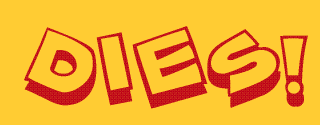

The independent consumer guide to beer product dating.


The independent consumer guide to beer product
dating.
The largest brewery in the United States, Anheuser-Busch jump-started the dating controversy (mostly an effort to make smaller breweries look bad) by changing their date codes in 1996. They used no less than four different coding schemes that year, resulting in fairly widespread confusion. It gets even worse when you realize there are slightly different coding schemes used for cans, bottles, and boxes. Frankly, there are days I hate Anheuser-Busch. (Namely, the days I try to update this page.)
Advertisement: Find Anheuser-Busch
collectibles on eBay -- Click here for eBay!
Anheuser-Busch brands include American Originals, Budweiser®, Busch®, Christmas Brew, "Doc" Otis Hard Lemon Malt Beverage, Devon's Shandy, Hurricane malt liquor, King Cobra malt liquor, Killarney's Red Lager ,Michelob®, Natural Light (and Natural Pilsener), O'Doul's® (a non-alcoholic malt beverage), Pacific Ridge Pale Ale, Red Wolf, Tequiza, and ZiegenBock. They brew/distribute the U.S. versions of Carlsberg and Kirin under license from foreign breweries, but those beers don't use Anheuser-Busch dates. An official list of Anheuser-Busch beers is available on their website.
And now a special warning: According to Old School Malt Liquors, Budweiser Malt Liquor was discontinued in 1973, so we can consider all of those bottles to be very expired.
Anheuser-Busch's manufacturer number is 18200.
If you thought the constantly-changing code format was bad enough, try finding the codes on actual beer. Many packages (especially bottles and cans) only include half the code. Fortunately, it's the half with the date. Note that most packages printed after Anheuser-Busch began Freshness Dating will also have a blue "Born On" icon explaining the 110-day limit.
Anheuser-Busch changed their dating scheme twice since Beer Dies! was started.
Prior to July 1996, all Anheuser-Busch products were labeled with a production code that included the shipping date in a Julian format as the the 2nd through 4th digits of the production code. This example is taken from a 24-pack of Busch.
Although some Anheuser-Busch regional breweries continued to use this scheme longer than others, the latest code I saw was Day 260 (mid-September 1996), which would have passed date in January 1997. All Anheuser-Busch beers using this dating scheme should be past date. If this system were still in use, today's expiration number would have been .
Sometime in July 1996 (the exact date seems to have depended on the regional brewery and/or product line), Anheuser-Busch started labeling their beers with a "Born On Date" that included a Julian date and a MMDD date. An example (taken from a Bud Light® case):
This scheme came and went so quickly that all beer coded with it should be past date. Just to be sure, today's "expiration date" is .
Less than a month after changing the format of their product codes, Anheuser-Busch changed them again, and began its advertising campaign for "Freshness Dates". Although the new format hardly need explanation, Anheuser-Bush explains it, so I will, too (this example is also taken from a case of Bud Light):
Under this system, Anheuser-Busch products dated before are past date.
Anheuser-Busch actually started using the code format before it ran out of the old boxes, confusing a significant number of people (who assumed the unlabeled date was an expiration date). Of course, as the beer guy, I was the always the one who had to explain things to them. Just another small example of Anheuser-Busch making my life hell whenever they can.
Once in a while, an Anheuser-Busch employee will have to repackage some cans or bottles because the box was damaged. In those cases, the product date is added to the box with a hand stamper that only include the date, either in DDMMYY or the Julian date.
BeerDates.com is the independent consumer guide to beer product dating. It is not owned, operated, affiliated with, or endorsed by any brewery or brewing company. In other words, if you want to send e-mail to a beer company, don't send it to me. "Budweiser", "Bud Dry" "Bud Light", "Busch", "Michelob", "Michelob Light", and "O'Doul's" are registered trademarks of Anheuser-Busch, Inc. Try to respect that, OK?